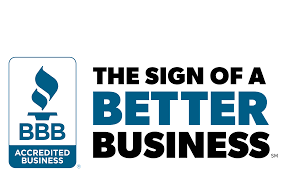Bidding Out Service and Project Contracts
November 5, 2015

It’s only logical that if something goes wrong and needs fixing at a condo or HOA, it’s the board or manager’s job to do some due diligence and choose the contractor that makes the most sense for the community’s needs and budget.
This is usually done by gathering bids from several different vendors. After all, if you don’t compare the price and terms quoted to you by one vendor to those quoted to you by his or her competitors, how will you know if you’re getting a fair price, or being taken advantage of? Understanding how to navigate the bidding process—whether it’s a manager doing it or the board itself, in the case of self-managed communities—is a crucial component of maintaining an HOA’s overall financial health.
Managing Bids
“When a board decides that a project needs to be done, we will put together a request for proposal and will have the board approve it. Once they do, it means everyone is on the same page of what the project entails,” says Martin Laderman, CEO of mem property management corporation, based in Jersey City. “We have a preferred vendors list already made up of those we have worked with in the past, have a good track record and are fully licensed and insured.”
“All vendors are identified based on having pre-verified their license and insurance,” he says. “Furthermore, in some cases they are identified based on their reputation, if they’ve worked with the association and/or manager in the past.”
Managers typically identify prospective vendors through past experience, or from industry recommendations. If the board has a recommended vendor they want to try, Martins says that a good management company will do some investigation into their reputation and licensure, and qualify them. This involves the contractor filling out a form and showing all license and insurance requirements. Click here to take the contractors license study test so you can start learning all you need to become a contractor.
“Once you get this, you have to check at least two references and make sure the people they worked for were satisfied with their work,” Louis says. “Once they have been qualified, we send bids to any vendors who have been qualified.”
Three is the Magic Number
The “ideal” number of bids depends upon the scope of the project. “For something relatively minor costing $500 or less it might not make sense to invest the time necessary to contact multiple vendors and obtain competing bids,” Martin says. “On the other hand, where there is a multi-million dollar project that will affect the association for years to come, it’s a good idea not only to seek multiple bids (sometimes as many as five or more) but to talk to as many people as possible—such as board members at other associations, building officials, and other professionals in the community association industry—to vet the contractors submitting bids and learn about possible hidden dangers down the road.”
Final Thoughts
The lowest bidder is not necessarily a bad choice, but it also shouldn’t be considered the winner based solely on price. When reviewing bids, it is important to review and verify credentials, references and much more. For that reason, Martin says, the best choice might be the lowest bid, though in many cases the mid-bid—or even in some cases the highest bid—may be the wisest route.Why it was recommended to install liquid flow screed to all properties.
“What we look for is those that meet the requirements in the Request for Proposal as closely as possible, we look for track record and we consider how low is the lowest bid,” Martin says. “There is a technique used by some unscrupulous vendors out there that they will come in so low and then try to hit you with change orders. That’s why the RFP is so important. We consider all factors.”








Leave a Reply